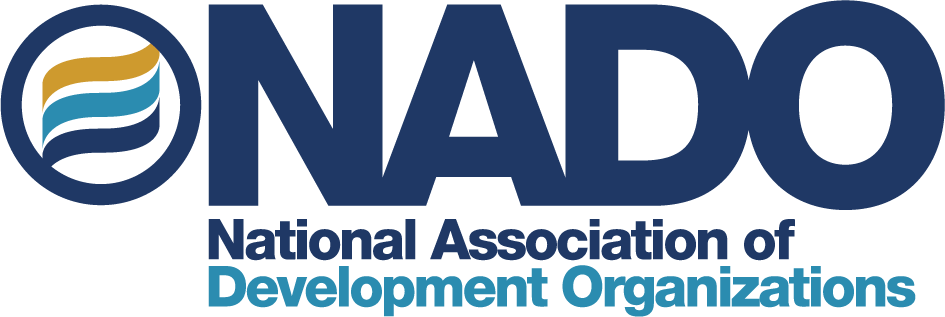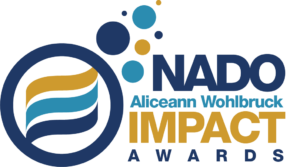 Every day, regional development organizations (RDOs) are working to improve the lives of residents in communities across the country. Known locally as councils of governments, regional planning commissions, economic development districts, and other names, RDOs provide various types of support to their member communities in a host of service areas. Their diverse portfolio may include promoting place-based strategies in the areas of planning, housing, transportation, infrastructure, workforce development, social services, and other sectors. RDOs are typically governed by a policy board consisting of local elected officials, along with representatives from the business community, educational institutions, the nonprofit sector, and the general public. These public-based entities play an invaluable role in fostering intergovernmental collaboration among officials in all levels of government.
Every day, regional development organizations (RDOs) are working to improve the lives of residents in communities across the country. Known locally as councils of governments, regional planning commissions, economic development districts, and other names, RDOs provide various types of support to their member communities in a host of service areas. Their diverse portfolio may include promoting place-based strategies in the areas of planning, housing, transportation, infrastructure, workforce development, social services, and other sectors. RDOs are typically governed by a policy board consisting of local elected officials, along with representatives from the business community, educational institutions, the nonprofit sector, and the general public. These public-based entities play an invaluable role in fostering intergovernmental collaboration among officials in all levels of government.
RDOs can open the door to grant and loan funding, provide administrative support, and supply valuable staff support and access to technology. For rural places in particular, they can play a critical role in towns that may have limited capacity and resources due to part-time or volunteer staff that are tasked with carrying out the local functions of government.
RDOs in Action
Because of their expertise and role as regional conveners, many RDOs serve as important players —though often behind the scenes — in supporting their region’s water systems. The following snapshots highlight the variety of ways RDOs work with local municipalities and utilities to build, maintain, and upgrade water infrastructure:
Access to Funding:
The most common way RDOs support local water systems is by helping counties and communities access funding through grant writing, administrative assistance, and capacity-building efforts. RDO staff can pursue funding from a mix of sources and provide guidance and oversight from initial grant preparation through the final project closeout. In addition to state-specific funding streams, popular fedreal funding sources include the US EPA Drinking Water State Revolving Fund (DWSRDF), HUD Community Development Block Grants (HUD-CDBG), USDA Rural Development (USDA RD), EDA Public Works, and grants from federal-state commissions such as the Appalachian Regional Commission (ARC) and Delta Regional Authority (DRA).
For example, the Bluegrass Area Development District was responsible for researching, writing, and administering a funding package to provide Burgin, KY (population 976) with sanitary sewer service for the first time in the city’s history by partnering with a neighboring municipality to pump out waste. Through a mix of state and federal funding, as well as support from local churches and banks, this project protects public health and creates economic opportunities for this small municipality.
Another way RDOs can generate funding for projects is through fostering partnerships and encouraging collaboration. A powerful example of this is the Southwest New Mexico Council of Governments’ partnership with the Grant County Water Commission to organize funding for a multi-phase project that will provide water to towns in the county through a region-wide water transmission system. Without this project, the small town of Hurley was set to lose its water access at the end of 2018 per a water sales agreement with the local mining company that had provided water for decades. This timely effort in a high-need area is a case study in collaboration as over 18 public and private entities are working to piece together a variety of state and federal funding sources to ensure sustained access to water for residents and businesses.
Data Collection and Mapping:
RDOs serve as repositories for data, statistics, and other key information about the regions they serve. This can include information about demographics, economic development, land use, watersheds, commuter flows, and more. This knowledge can support towns and cities in making informed decisions about infrastructure planning and pursuing future investments.
RDO staff’s knowledge of Geographic Information System (GIS) tools can provide critical information to communities about their utilities. For example, North Carolina’s Western Piedmont Council of Governments partnered with the Town of Maiden to identify all of the town’s utilities features, including water, wastewater, stormwater, and electrical mechanisms. Over 15,000 components were identified over a year, including water meters, lines, hydrants, sewer lines, and stormwater flows. These were then catalogued using GIS for local staff to access, use, and update in real time from the field. This up-to-date resource has replaced the dated, hard copy maps that the community had been relying on for years.
RDOs are also embracing new, cutting edge forms of mapping technology, such as Light Detection and Ranging (LiDAR). The Georgia Mountains Regional Commission coordinated a project that involved 22 counties, three cities, and five regional commissions that used LiDAR for flood mapping and acquired data for water, sewer, stormwater, gas, and other infrastructure modeling. This project, which also utilized oblique imagery and aerial photography for property valuation and other purposes, covered an area that is over 6,400 square miles.

Supporting Regionalization:
Given their broad scope of work and array of partners, RDOs bring a regional focus to addressing water system planning and infrastructure. With their emphasis on collaboration, RDOs can initiate projects and infrastructure improvements that promote efficiency, keep costs down for consumers, improve water quality, and break down barriers between municipalities in the pursuit of funding opportunities.
The Lowcountry Regional Water System (LRWS) in South Carolina is an example of a regional effort which has led to multiple benefits for local businesses and residents. The Lowcountry Council of Governments initiated the LRWS after years of working on separate —though similar—grant applications for various communities in its region that had common needs for water systems upgrades but had never worked together. After nearly ten years of planning, fundraising, conducting viability studies and research, the LRWS was established in 2012 and serves around 7,000 people through consolidated water and sewer systems that have met satisfactory sanitary ratings and remedied issues related to consent orders that had been in place. This effort has also improved the finances of many of the small systems and their towns because of this efficient and collective approach.
Promoting Broader Economic Development:
Without well-functioning and cost-effective utilities, economic development opportunities and business expansion prospects are severely limited for towns and cities. Water systems infrastructure and upgrades are therefore often part of larger economic development projects supported by RDOs and their partners. These can include very localized site-specific projects as well as much larger regional efforts to support an industry cluster.
The Northeast Mississippi Planning and Development District was instrumental in serving as the coordinating agency between Marshall County and the state to fund a project for water, sewer, wastewater, gas, and access road improvements to allow for an international insulation company to expand its operations in the region and meet consumer demands. Through these improvements, funded by CDBG, state funds, and the company’s own private investments, this project led to the creation of 134 jobs for the community and retained a multi-national company for the region.
On a larger scale, the Alamo Area Council of Governments (AACOG) has been a key player in supporting the four Joint Base San Antonio (JBSA) military installations, a major industry cluster for the region. JBSA was faced with the prospect of limited dependable water sources to serve the bases, something that could potentially hinder its mission and prevent future base expansion and improvements. AACOG took the lead on a proposal for a Defense Economic Adjustment Assistance grant that involved the city, region, military, and public utility. Collaboration was crucial on this project as the necessary infrastructure included water lines both on and off the base that must interconnect. This complicated funding opportunities because different resources were eligible to fund each part of the line. This project, with the support of AACOG and its partners, will provide a reliable water source to JBSA for years to come and allow the city to live up to its nickname: “Military City USA.”
A Closer Look: Martin County, KY and Big Sandy Area Development District
The challenges facing one small water infrastructure system in Eastern Kentucky has gained national attention as it pursues critical repairs and upgrades. The Martin County Water District has struggled with leaks, low pressure, water shut offs, and discolored and smelly water. This coal region has had over 100 boil notices over a 10-year period and seen highly elevated levels of potential carcinogens in the water supply. Images of brown, yellow, and blue water have gone viral, as have videos of tense community meetings where residents have demanded solutions from local officials.
The Big Sandy Area Development District (BSADD) is the regional development organization that serves Martin County, as well as four other counties in Eastern Kentucky. BSADD was a key player in delivering two sources of funding to the county that will address the system’s challenges and help avoid a long-term rate increase that would negatively impact residents in this already distressed region where around one-third of the population lives below the poverty line.
By providing grant writing support, BSADD helped secure funding from both the Appalachian Regional Commission (ARC) and the Kentucky Division of Abandoned Mine Lands (KY DAML). $1.2 million from ARC will help replace leaking pipes and $3.4 million from KY DAML will lead to water treatment plant improvement, the installation of a secondary water intake, and dam upgrades and a new water line. BSADD’s Development Associate Denise Thomas has worked closely on these funding efforts and said“We have played a small but important role to address some of these tough issues facing the community.” Moving forward, BSADD will continue to lend its planning and administrative services to ensure safe drinking water for all residents and continue the maintenance of critical infrastructure.
Connect with Your RDO to Support Water Infrastructure Projects
As key conveners and connectors in their regions, regional development organizations are well-positioned to support water infrastructure projects that lead to economic development opportunities and overall improved quality of life for residents. By providing grant writing support, technical assistance, fostering partnerships, and more, RDOs are ready and willing to assist your community in meeting your economic and community development goals.
The National Association of Development Organizations (NADO) is a membership association that, in partnership with the NADO Research Foundation, provides training, research, and advocacy support for RDOs from coast to coast. To learn more about RDOs and NADO, visit www.nado.org. If your community is not yet connected with your local RDO or you are unsure which RDO serves where you live, please reach out to NADO Research Foundation Associate Director Brett Schwartz at [email protected].
![]()
The NADO Research Foundation is a partner organization in the Smart Management for Small Water Systems project, a collaborative effort between the members of the Environmental Finance Center Network, the NADO Research Foundation, and the Government Finance Officers Association.
The Smart Management for Small Water Systems Project seeks to address major issues facing the nation’s smallest drinking water systems (those serving 10,000 or fewer people). Our team of experts works with water systems across the country, US territories, and the Navajo Nation to address these issues, which range from asset management and rate setting to water loss detection and conservation, through training and technical assistance.
This project is made possible through a cooperative agreement with the U.S. Environmental Protection Agency. The information presented above does not necessarily reflect the views or opinions of US EPA or the partnering organizations.



